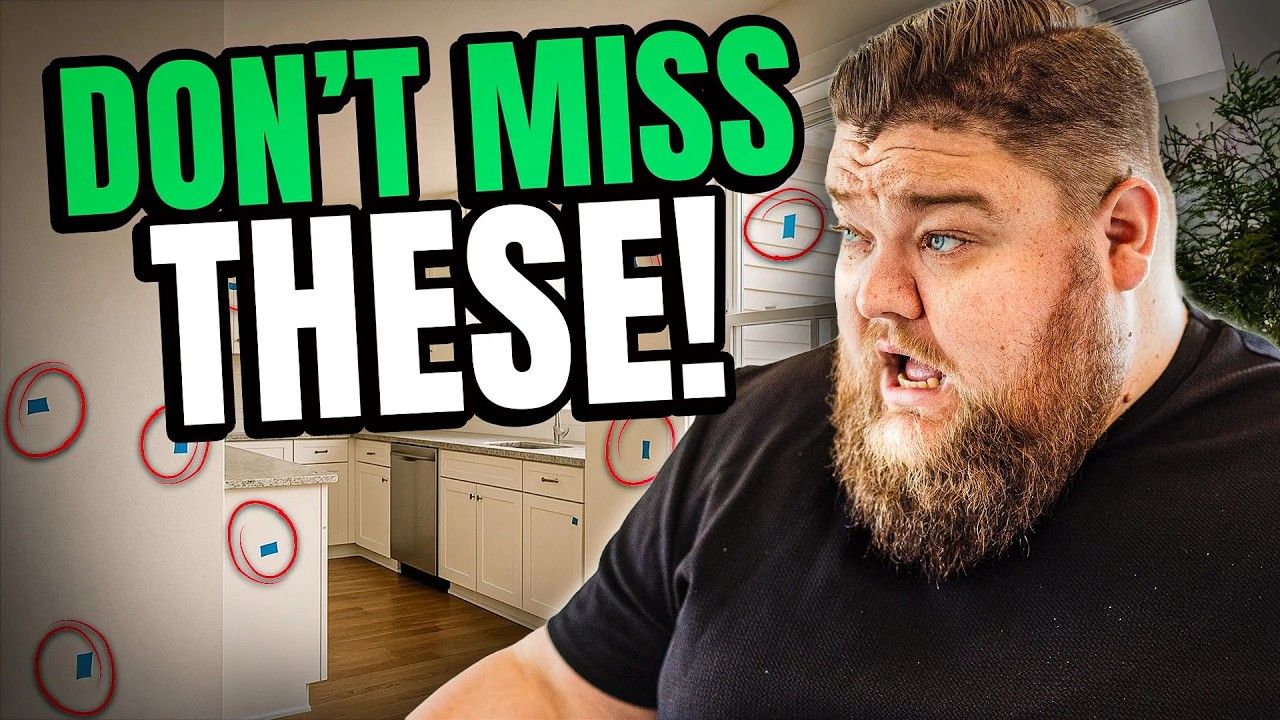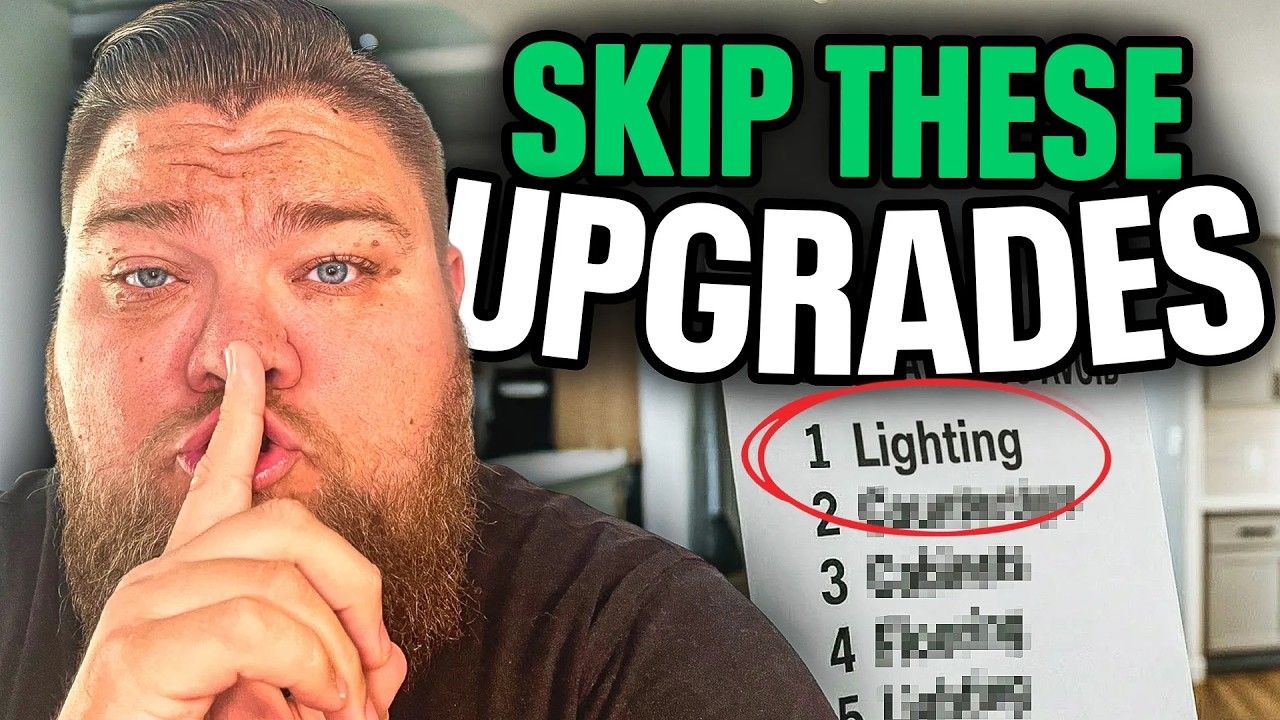This Secret Tool Will Make You a Master Deal Maker | How to Save Big on DFW New Homes
If you want to learn how top buyers get the best deals on new homes in DFW, you need a simple lens to see what builders are hiding in plain sight. I am going to walk you through a practical, repeatable strategy I use with clients every day. This is the same approach real insiders use when negotiating inventory homes and cancelled contracts. Read on and you will understand how top buyers get the best deals on new homes in DFW and how to apply those techniques to the exact house you want.
Table of Contents
- Introduction: How to Save Big on DFW New Homes
- Inventory Homes vs. Cancelled Contracts – What to Watch For
- Design Cues That Reveal Hidden Savings on DFW New Homes
- How Builders Decide Spec Finishes – The Math Behind the Choices
- Where the Real Opportunity Comes From When Buying New Homes in DFW
- Proven Negotiation Tactics to Save Big on DFW New Homes
- Why Price Point Matters When Negotiating Builder Deals in DFW
- Practical Checklist for Touring Builder Inventory in DFW
- Final Thoughts – Prioritize Fit, Then Negotiate Smart
- FAQs On How to Save Big on DFW New Homes
Introduction: How to Save Big on DFW New Homes
Many buyers underestimate how the builder sales team sets inventory homes up. Production builders - think of names that operate on volume and repeatable floor plans - will build two types of homes that are most relevant to you: homes they spec or inventory, and homes that were started for a buyer and then returned because the buyer could not or did not close. Understanding the difference is the single reason top buyers get the best deals on new homes in DFW.
Find Your Perfect New Build. Search New Construction.
Inventory Homes vs. Cancelled Contracts – What to Watch For
Inventory homes are built on speculation. The builder decides which floor plans to place, which structural options to include, and which finishes to install based on broad buyer trends and the sales rep's sense of what will sell. These are meant to appeal to a wide range of buyers and are usually designed to be timeless and crowd-pleasing.
Cancelled contracts, busts, or returned homes are different. These homes were selected by an individual buyer who picked unique design choices, structural add-ons, or color palettes that reflect a single person's taste. When a contract cancels, that home often becomes a pressure item for the builder. They did not expect to get it back, and suddenly they need to move it. This creates negotiating leverage.
How to Spot Busted Contracts and Returned Homes in DFW
Here is the secret: look for homes that read as someone else’s house. If a model or spec home looks like it was picked by a single buyer rather than designed to sell to the masses, there is a strong chance it was a cancellation. When you can identify that, you already know the builder is more motivated to move that specific property. That is exactly how top buyers get the best deals on new homes in DFW.
Design Cues That Reveal Hidden Savings on DFW New Homes
Most sales reps and designers pick neutral, on-trend finishes for spec homes so they appeal broadly. Here are the red flags that a house might have been personalized and therefore returned:
- Waterfall countertops where the slab runs down the side of the island
- Full rows of glass-front upper cabinets with internal lighting or electrical outlets
- Unique backsplash choices - mirrored tiles, bold colors, or full-slab backsplash carried up the wall
- Hutches, built-ins, specialized shelving or glass displays
- Nonstandard paint palettes - blues, greens, or moody accent walls that stand apart from neutral spec tones
- Custom mosaics in laundry rooms, bathrooms, or accent walls
- Uncommon structural options - sliding glass walls, extra large patios, or unusual bedroom configurations
If you see several of these elements in one house and you did not see them in nearby inventory examples, that property probably belongs in the cancelled-contract category. That is how top buyers get the best deals on new homes in DFW - they spot the uniqueness and leverage it.
How Builders Decide Spec Finishes – The Math Behind the Choices
Sales reps typically use budgets and percentages when creating spec inventory. From conversations across multiple communities I work with, a common pattern emerged:
- Structural upgrades: roughly 2 to 3 percent of base price
- Design and electrical upgrades: roughly 3 to 5 percent of base price
- Overall upgrade spend on a one-story can be up to about $30,000 to $40,000 all in, depending on price point and lot
That budget is used to make inventory homes appealing. When a house was customized by an individual, the spend may be different and the make up of upgrade dollars will vary. That variance creates negotiating room if the builder needs to move that house quickly.
Where the Real Opportunity Comes From When Buying New Homes in DFW
There are two main scenarios where you will find leverage:
- A returned buyer's home - a bust or cancellation that the builder did not plan on getting back.
- An older inventory home in a phase that is closing out while the builder is preparing a new phase where pricing is higher and standard features are being cut back.
In scenario 1, the builder is often more willing to negotiate because that house counts against the sales numbers and the sales rep needs fewer cancellations on the books. In scenario 2, the builder may be trying to clear older inventory to move into new phases with higher prices and fewer standard features. Either scenario can create more room for a negotiated price or seller-paid changes.
Proven Negotiation Tactics to Save Big on DFW New Homes
Once you have identified a likely returned home or an older inventory home, you can apply negotiation tactics that the top buyers use. The key is to be strategic and respectful, and never reveal that you know exactly why the house is being pushed. Here are practical steps to follow:
- Compare similar floor plans in the same neighborhood. If two houses are identical except one has unique selections, that unique house could be a cancellation item.
- Ask about days on market and how long the home has been listed, but do not press on why it is still available.
- Explain your needs clearly: what you must have and what you can live without. Flexibility in finishes gives you leverage.
- Request a credit or price reduction tied to a specific change you do not want in the house - for example changing a mirrored backsplash or replacing a dark countertop.
- Time your negotiation around quarter or year end when sales teams are trying to hit targets.
- If you need the house to be modified, ask for builder-paid changes in exchange for a higher offer or a faster close. Builders often prefer that because it keeps the sales numbers clean and moves inventory.
Specific Language to Use With the Sales Rep
Real talk: avoid sounding accusatory. You want to make the sales rep comfortable and portray yourself as a motivated buyer who simply needs the house to match your family needs. Use phrases like these:
- "We love this layout but the backsplash is not our style. What options do you have to change it?"
- "If we can get to X amount or a builder credit of Y, we can close quickly."
- "We are ready to move fast if the builder will help with this one change we need."
That tone gets results because it positions you as the solution to their problem. This is exactly how top buyers get the best deals on new homes in DFW - they create win-win outcomes.
Timing the Market – Phases, Land Costs, and Feature Changes
Watch community phases closely. Often the developer will price the next phase higher because land costs rose. When that happens they may also cut back on standard features to keep margin - for example removing the smart home package, changing door heights, or eliminating certain gutter or exterior options. That means inventory homes in the older phase can have more features than newer ones and sometimes be a better value.
Because the next phase is priced higher, sellers want to clear out old inventory and will sometimes make concessions. This is another way top buyers get the best deals on new homes in DFW - they buy the nearly-complete or sitting inventory from the lower-priced phase with more features.
Understanding Listings and Days on Market for Builder Inventory
One complication: days on market can be misleading for builder inventory. Some builders list the home the moment they break ground, others wait until it is almost finished. This inconsistency means you cannot rely solely on days on market. Instead:
- Track listings over time and watch price changes and status updates
- Ask the sales rep tactfully about how long the lot or model has been available
- Be aware that some homes look like model homes or showcase homes - those may not have big discounts because they are meant to attract buyers and show features
Why Price Point Matters When Negotiating Builder Deals in DFW
Negotiation room varies by price point. In lower price ranges - say under $400k - margins are tighter and there is less room to negotiate. As price goes up into the 500s, 600s, and 700s, there is usually more absolute dollar room to work with. That does not mean you cannot find deals on lower-priced inventory, but the potential for larger concessions often appears at higher price points.
How to Estimate Builder Upgrade Spend and Use It to Your Advantage
Use these back-of-envelope percentages as a sanity check when evaluating inventory:
- Design and electrical upgrades: expect about 3 to 5 percent of the base price
- Structural upgrades: expect about 2 to 3 percent of the base price
- Everything combined on a one-story: $30,000 to $40,000 can be a reasonable upper limit in many communities
Knowing this helps you ask informed questions. For example, if a house has a very expensive-looking finish but the builder’s typical upgrade spend is modest, the rep may be more willing to remove or credit that customization when negotiating. That is exactly how top buyers get the best deals on new homes in DFW - they use the builder’s budget against them in smart ways.
Setting Realistic Negotiation Expectations
Be realistic about the size of the discount. This strategy does not promise instant $50,000 drops on every home. In some rare timing situations you might see big moves, but more often the wins are credits for changes, builder-paid repairs or modifications, or modest price concessions that make the overall purchase more comfortable for you. The most important gain is usually the balance between a house that fits your family and a price you can live with.
Which Builders Offer the Best Chance to Save Big on DFW New Homes
This approach is especially effective with builders who allow individual decisions and build-to-order floor plans. It is less effective with mass-production builders that centralize options and do not sell homes at the dirt level where buyers hand-pick detailed finishes. The tactic is best used with semi-custom or production-plus builders who let buyers choose finishes or who create showcase homes for their sales teams.
- Work well: builders that allow individualized selection and have regional sales reps and designers
- Less effective: builders that use a rigid package and do not let buyers make discretionary selections
Practical Checklist for Touring Builder Inventory in DFW
Use this checklist when you walk into a home. Bring a notebook, or use your phone to take photos and timestamp your notes.
- Compare this house to multiple other spec homes in the community
- Note any unique features: waterfall island, mirrored backsplash, glass cabinetry, etc.
- Ask which phase the lot is in and whether this was a model or a buyer-selection
- Check the days on market and ignored listing timeline for clues
- Ask about standard features in the next phase - are these being reduced?
- If you like the house but dislike a specific finish, propose a builder credit to remove or change it
- Consider timing - quarter end and year end often yield better leverage
Download Your FREE Relocation Guide
Final Thoughts – Prioritize Fit, Then Negotiate Smart
You can learn how top buyers get the best deals on new homes in DFW but remember: the deal is only valuable if the house works for your family. Prioritize the floor plan and room flow first. Use the negotiation strategy to improve price or remove items that make the house unlivable for you. The best outcome is a home that fits your life and a price that fits your budget. Questions? Call or text me at 469-707-9077.
FAQs On How to Save Big on DFW New Homes
How do I tell if an inventory home was a cancelled contract?
Look for design cues that stand apart from the builder's standard taste. Waterfall islands, mirrored or colorful backsplashes, glass-front cabinets with interior lighting, built-ins, and non-neutral paint palettes are common indicators. Compare the house to other inventory homes nearby; if it reads as unique, it may be a cancelled contract and could have negotiating leverage.
When is the best time to negotiate a builder inventory price?
Best times include quarter or year ends when sales teams are closing numbers, close-outs between phases when the builder wants to clear lots, and anytime a specific house has been sitting for a while. Be mindful that days on market are inconsistent across builders, so use multiple signals together.
Will every returned home have a large discount?
Not always. Returned homes create leverage, but discounts vary. Often builders will offer credits for changes, cover the cost to modify a disliked feature, or make modest price concessions. Large discounts can happen in rare circumstances, but the more realistic expectation is useful credits and flexibility.
Which builders does this strategy work best with?
It works best with builders that allow semi-custom selections and have sales reps who pick features for inventory homes. It is less effective with highly regimented, mass-production builders who use fixed packages and do not sell homes at the dirt level with buyer-selected finishes.
How much do builders typically spend on design and structural upgrades for inventory?
A common pattern is 2 to 3 percent of the base price on structural upgrades and 3 to 5 percent on design and electrical. For some one-story homes, builders may spend up to $30,000 to $40,000 total on upgrades, depending on price point and lot.
Should I bring a real estate agent when touring builder inventory?
Yes. An agent who understands new construction and builder negotiations can help you identify cancelled contracts, evaluate comparative inventory, and present offers in ways that maintain leverage while keeping the sales rep engaged. Agents provide market context and protect your interests during negotiation.
What if I love a house but hate a specific feature?
Ask for a builder credit or request that the builder swap the feature before close. Often builders prefer to make adjustments rather than hold the house longer. Be clear and reasonable in your request; propose a solution that helps both you and the builder move forward.
If you apply this methodically, you will understand how top buyers get the best deals on new homes in DFW and can use the builder’s own decision-making process to create opportunities. The key is observation, timing, and respectful negotiation.

Zak Schmidt
From in-depth property tours and builder reviews to practical how-to guides and community insights, I make navigating the real estate process easy and enjoyable.













